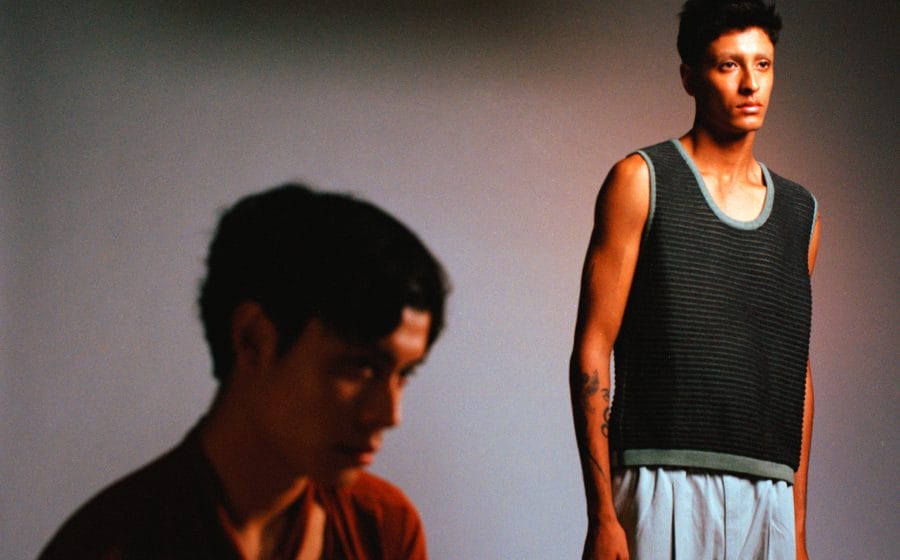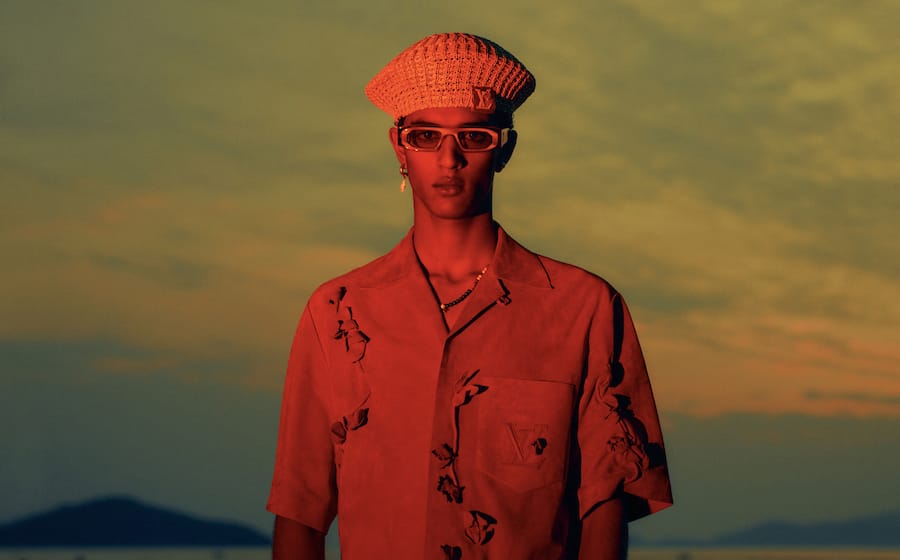
According to Jon Max Goh, co-founder and chief design officer of Livingwear, undergarments could be made better — eco-friendly and accommodating to all sizes and body types.
—
How serious are you when it comes to the two words “living” and “wear”?
Quite, actually. One of the reasons I joined Livingwear was because there were a lot to the name that allowed founder Desmond and I to explore and build on. In the last two years, we have come back time and time again to these two words — exploring and excavating what the brand stands for.
“Living” is a beautiful word that gives the brand life and we want it as a space where we can grow, explore and make mistakes. The whole journey has been us practising and living out this work.
View this post on Instagram
The hope for the brand has always been to be more than just an apparel company that sells essentials. How does it become a space that embodies the idea of living through people and stories? No one has life figured out. Life is all about celebrating the flaws and mistakes — not to be precious about it.
The word “wear” is really important because it’s about the clothes we make — who we’re making it for and how we’re making it. When we think about these two aspects, we think about how they come together. We get a lot of satisfaction from putting something out and seeing it being useful and reliable in someone’s life.
—
Sustainability usually comes at a higher retail price, how do you keep the brand affordable?
It comes back down to something Desmond and I think about all the time — why and how we did it. His main goal was to focus on sustainable clothing accessible to the layman, which is something we’ve been consistent with.
It’s not easy but it’s a business decision because we’re saying that we’re not going to mark prices up and instead keep them consistent (within the three-to-four mark up range). However, it does mean that some products will never go on discount or we’ll not get a good cut when it comes to consignment later.
—
View this post on Instagram
Diversity in casting might sometimes come across as tokenism, is this a concern?
I think sometimes it’s overly simplistic when people gloss over efforts and pass it off immediately as tokenism. I feel that if brands out there are trying to represent diversity, kudos to them because it shows a shift in awareness towards cultural expectations of consumers.
To me, that in itself is a big marker that we have moved as an industry.
View this post on Instagram
I also think sometimes it’s too simplistic to say a brand is trying to be “woke” for the sake of coming across as relevant. If that’s the case, then yes we want to be “woke” and for our consumers to be part of that “woke” community.
If friends who aren’t as tuned into issues of diversity and representation, stumble on our page, hopefully we can be their first point of entry into thinking about these issues more personally.”
When it comes to a team that is just Desmond and I — when you have to cast and beg friends to take their clothes off regardless of body shape — there’s a lot of physical and emotional energy poured into it like a labour of love. It is also driven by a deeper believed impression that this is the image a brand wants to put out.
This conversation about the body is something I’ve always been interested in. Back in school, one of my thesis projects was not centred around garments or apparel. It was a visual study piece where I got my friends to strip down, be lensed and talk about how they felt in their skin. It was me questioning how we made sense of our identities and bodies based on the context of how other bodies move through the world.
—
What engineering has gone into making the brand’s statement “wear everyday” stand?
Honestly, at this stage, there’s nothing special about what we’ve created. It just boils down to the fact that we were looking for quality products and material created by people who knew how they were creating it. We’ve been spending more time getting our messaging correct and if you’re talking about a “secret sauce”, there are some things in development we’ve been trying to build.
—
View this post on Instagram
Was it difficult to craft an apparel that looks good for petite to larger sizes?
Taking into perspective with the first released batch, we have not fully achieved it and it’s something we’re working on. From a design perspective, there are a lot of technical difficulties — grading for the garments and finding a size chart that is able to accommodate this range. There’s no perfect strategy for this right now.
Fabrication does play a part because the pieces have a lot of stretch which makes it forgiving. We’re looking to explore three dimensional fitting on more body shapes so we can anticipate what we’re going to get. For example, when sizes do increase from 2xs to 5xl. It’s about partnering with the right technical designer and how we communicate it to our consumer. When sizes do go up, the description becomes “big and tall” but we would like to cater to them without mentioning they’re big and tall.
View this post on Instagram
Growing up, it never felt great walking into a store and feeling like nothing fit. I don’t think anyone should have such a shopping experience be it online or offline. How do we get better at helping our customers who are at opposite ends? How do we make them feel seen and heard? I find it absurd that for basic garments, most brands can only communicate one body shape with their campaign or lookbook images.
—
What is more interesting about austrian tencel fibre besides its sustainability roots and softness?
To put it geekily, the underlying structure of Tencel fibre can absorb moisture much more evenly and quickly as compared to polyester or cotton. It gets heavy very quickly, but it wicks as quickly. It’s cooler, drier and this is what makes it less favourable for bacterial growth.
—
How did you make sure the manufacturing factories were truly ethical?
It’s something we’re looking to improve and we’re sourcing for new partners and factories with Nicole van der Elst (of VDE Consultancy) who is our advisor on sustainability and supply chains. We’ve been building comprehensive compliance rules (a list of yes and nos) that we require from partners and factories. These are checked easily based on the compliance reports they either have. Or if not, for a smaller brand like us, we can check if they have larger brands that they already work with and are certified by.
—
View this post on Instagram
What was most important when designing underwear? What is 360 stretch?
360 stretch is a term that refers to fabrics that are stretchable in all directions. However, there is a catch. Do you want a fully organic biodegradable product? It might not work for underwear because you have to have spandex for stretch and for shape retention.
Another important aspect was comfort and it lies in the waistband. If you have your hands on a pair, you will be able to experience how it is luxuriously soft and kind to the body — it doesn’t leave marks.
—
The underwear market is polarising — big players with big prices or cheap ones that go straight into landfills — where does livingwear lie in this spectrum?
That was Desmond’s big question when he started the brand. His realisation with the really expensive ones was that most don’t feel good when worn. When creating the first piece, it had to be as good and if not better, than expensive ones. In doing the costing and pricing, he realised we could still make a profit without charging a huge price.
We sit in a spectrum that has long term and short term wear at either end. We use natural fibre so it will naturally break down over time. No underwear will look good and last forever so we believe we sit more on the former spectrum.
Shop Livingwear today at livingwear.co.







